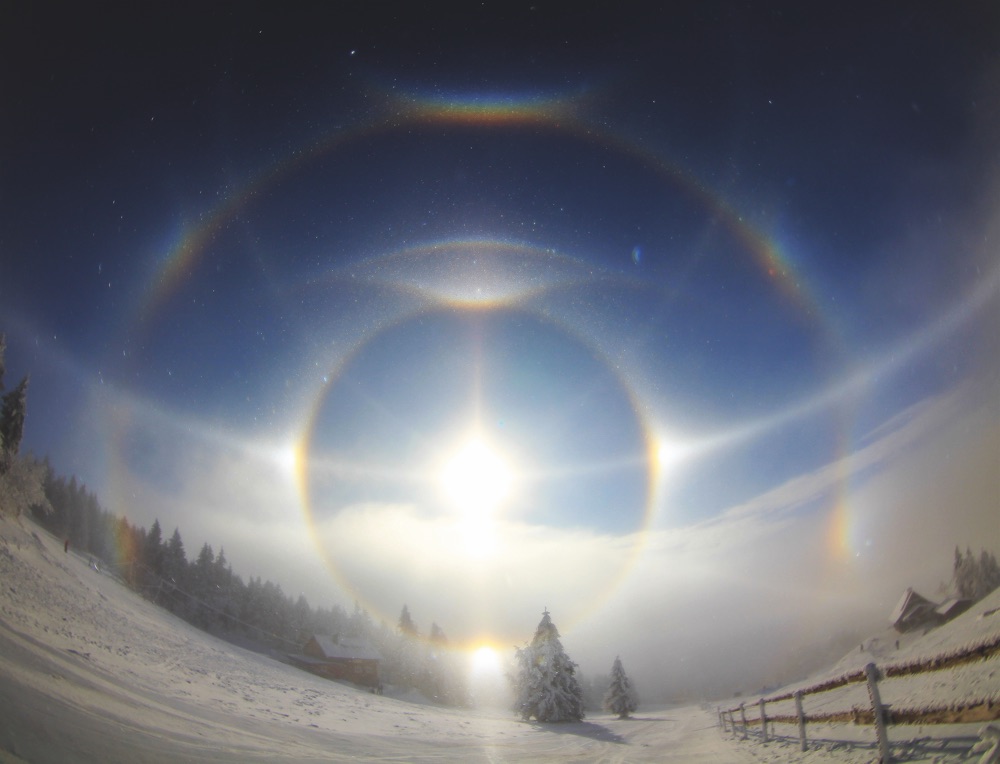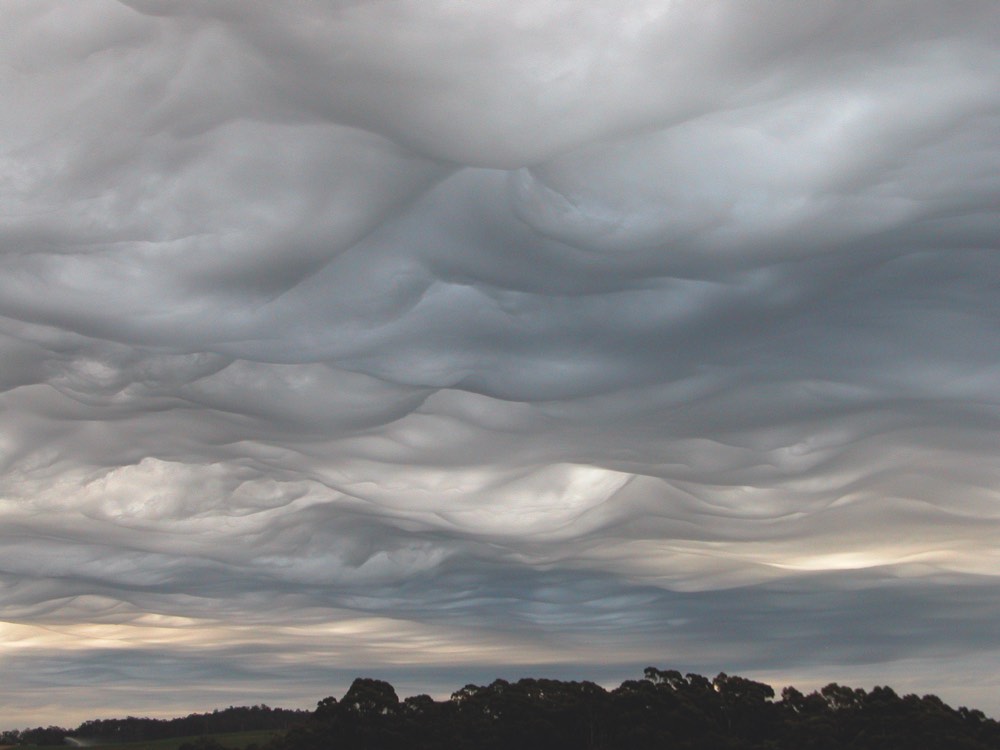Cloud Atlas Now Online: See All the Bizarre Formations Around the World

A dramatically turbulent cloud formation called asperitas and the bizarrely cylindrical roll cloud are among the newest additions to the international handbook for cloud identification.
The World Meteorological Organization has released a new, digitized version of its "International Cloud Atlas," the global reference book for meteorologists and skywatchers alike. It's the first update for the atlas since 1987 and the first version to be fully web-based. The release also marks a red-letter day for amateur enthusiasts in the Cloud Appreciation Society, who get the satisfaction of seeing the asperitas cloud that they discovered become an official scientific category.
"It is a new classification of cloud, with a chaotic, turbulent appearance, that was proposed by the Cloud Appreciation Society back in 2008, based on photographs sent to us from members all around the world," the organization posted on its blog. "It is a classic example of citizen science, in which observations by the general public, enabled by the technology of smartphones and the Internet, have influenced the development of this most official of classification systems." [Gallery: The Craziest Clouds Ever]
Clouds 101
The cloud atlas' classification system is not for the faint of heart. There are 10 basic "genera" of clouds, most of the names of which would be familiar to schoolchildren: cirrus, cirrocumulus, cirrostratus, altocumulus, altostratus, nimbostratus, stratocumulus, stratus, cumulus and cumulonimbus.
Within each genera are species, which describe the internal structure of the shape of clouds. A lenticularis cloud, for example, is a flattened pancake shape that looks a bit like a giant UFO. Each type of cloud can only have one species, but the same species types are present in multiple different genera of clouds.

Next, the classification system includes varieties of clouds, which describe the clouds' transparency and arrangement. A single cloud can have multiple varieties, except in the case of opacus (opaque) clouds varieties and translucidus (translucent) varieties, which are mutually exclusive: One doesn't let any sun through, and the other does. [See Photos of a Various Cloud Types]
Thus, a standard cloud identification might look something like "altocumulus stratiformis translucidus perlucidus undulates" — an altocumulus cloud arranged in a thin sheet (stratiformis) that is translucent to sunlight, has small gaps allowing blue sky to show through (perlucidus) and which has wavy features (undulates).
Get the Space.com Newsletter
Breaking space news, the latest updates on rocket launches, skywatching events and more!
New forms
The cloud atlas update doesn't alter any of the basic classifications for clouds, but it does add several new twists. The roll cloud, known as the volutus, is defined as a new species of cloud. These horizontal, cylindrical clouds form where descending cold air pushes warm, moist air upward. Under the right wind conditions, the atmospheric turbulence condenses into a tubular cloud that seems to roll across the sky.

The atlas also adds five new "supplementary features" to its classification system. Supplementary features are unusual parts of, or attachments to, clouds. The wave-like undulations of the undersides of clouds, dubbed "asperitas," are among these new features. Another is "cavum," known colloquially as a hole-punch cloud because the cloud has a large circular gap through which the sky can be seen. A "cauda" is a horizontal feature that extends like a tail from a cloud. "Fluctus" features are wave formations that look like something a cartoon surfer would ride; they're commonly known as Kelvin-Helmholtz waves and are caused by wind shear. Finally, "murus" features, or wall clouds, are familiar to any storm chaser for their role in the formation of tornadoes.
The other main changes to the atlas are the addition of a new accessory cloud, or a cloud that accompanies another, larger cloud, and the establishment of five new special clouds, which describe unusual cloud formation circumstances. The new accessory cloud type is called "flumen" and describes a low cloud associated with severe supercell storms.
The five new special clouds are: cataractagenitus, describing clouds that develop from the spray of large waterfalls; flammagenitus, describing clouds formed under the influence of wildfires; homogenitus, describing clouds formed by human activities, such as airplane contrails; silvagenitus, describing clouds formed under the influence of moisture from respiring trees; and homomutatus, describing clouds originally made by humans that gradually transform into more natural-looking forms, like a contrail that eventually spreads in the wind.
The cloud atlas is available online and will be official unveiled today (March 23) for World Meteorological Day.
Original article on Live Science.
Join our Space Forums to keep talking space on the latest missions, night sky and more! And if you have a news tip, correction or comment, let us know at: community@space.com.

Stephanie Pappas is a contributing writer for Space.com sister site Live Science, covering topics ranging from geoscience to archaeology to the human brain and behavior. She was previously a senior writer for Live Science but is now a freelancer based in Denver, Colorado, and regularly contributes to Scientific American and The Monitor, the monthly magazine of the American Psychological Association. Stephanie received a bachelor's degree in psychology from the University of South Carolina and a graduate certificate in science communication from the University of California, Santa Cruz.

